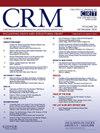The effect of standardization of insertion and removal of percutaneous left ventricular assist device
IF 1.6
Q3 CARDIAC & CARDIOVASCULAR SYSTEMS
引用次数: 0
Abstract
Background
The effect of standardizing an insertion and removal protocol for pVAD devices has not been previously described.
Objectives
We sought to evaluate clinical outcomes in patients who underwent pVAD insertion pre- and post-protocol standardization.
Methods
All patients who underwent pVAD insertion that remained in place at index procedure completion between January 2017 and September 2023 at a single academic center for both high-risk PCI and cardiogenic shock indications were included in the study. The primary outcome was the incidence of limb ischemia and major bleeding before and after the protocol initiation. Secondary outcomes included in-hospital and 30-day MACCE rate (death, myocardial infarction, stroke, emergent CABG), and how often the operators followed the protocol.
Results
A total of 89 patients had pVAD left in place (29 pre-protocol initiation and 60 post-protocol initiation). There was a significant decrease in incidence of limb ischemia post-protocol initiation compared to pre (17.2 % vs 1.7 %, p = 0.01) but no difference in bleeding incidence (13.8 % vs 20.0 %, p = 0.47). Adherence increased in all components of the protocol except for right heart catheterization.
Conclusion
Standardization of an insertion and removal protocol for pVAD devices led to a statistically significant decrease in limb ischemia in a high-risk patient population.
经皮左心室辅助装置插入和拔出标准化的效果。
背景:对 pVAD 装置的插入和移除方案进行标准化的效果尚未见报道:我们试图评估协议标准化前后接受 pVAD 植入术患者的临床疗效:研究纳入了 2017 年 1 月至 2023 年 9 月期间在一个学术中心因高风险 PCI 和心源性休克适应症而接受 pVAD 植入术且在索引手术完成时仍在位的所有患者。主要结果是方案启动前后肢体缺血和大出血的发生率。次要结果包括院内和30天MACCE率(死亡、心肌梗死、中风、急诊CABG),以及操作者遵循方案的频率:共有 89 名患者留置了 pVAD(29 人在协议启动前留置,60 人在协议启动后留置)。与方案启动前相比,方案启动后肢体缺血发生率明显下降(17.2% vs 1.7%,P = 0.01),但出血发生率没有差异(13.8% vs 20.0%,P = 0.47)。除右心导管插入术外,所有方案的依从性都有所提高:结论:对 pVAD 装置的插入和移除方案进行标准化后,高危患者的肢体缺血发生率在统计学上显著下降。
本文章由计算机程序翻译,如有差异,请以英文原文为准。
求助全文
约1分钟内获得全文
求助全文
来源期刊

Cardiovascular Revascularization Medicine
CARDIAC & CARDIOVASCULAR SYSTEMS-
CiteScore
3.30
自引率
5.90%
发文量
687
审稿时长
36 days
期刊介绍:
Cardiovascular Revascularization Medicine (CRM) is an international and multidisciplinary journal that publishes original laboratory and clinical investigations related to revascularization therapies in cardiovascular medicine. Cardiovascular Revascularization Medicine publishes articles related to preclinical work and molecular interventions, including angiogenesis, cell therapy, pharmacological interventions, restenosis management, and prevention, including experiments conducted in human subjects, in laboratory animals, and in vitro. Specific areas of interest include percutaneous angioplasty in coronary and peripheral arteries, intervention in structural heart disease, cardiovascular surgery, etc.
 求助内容:
求助内容: 应助结果提醒方式:
应助结果提醒方式:


